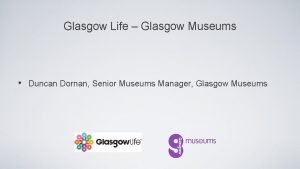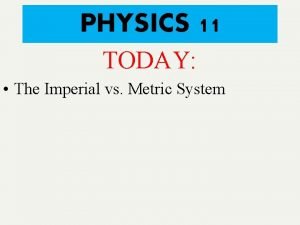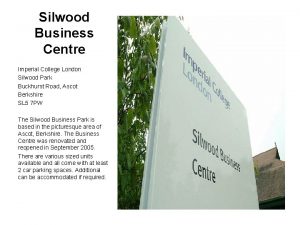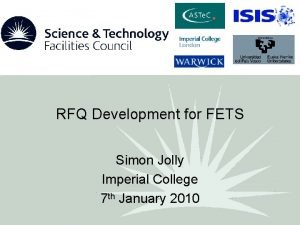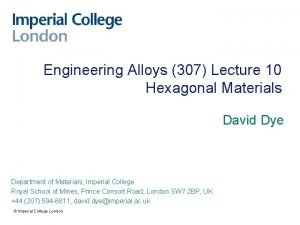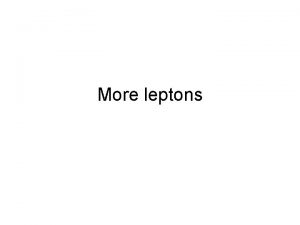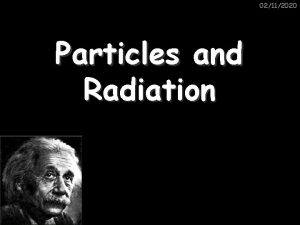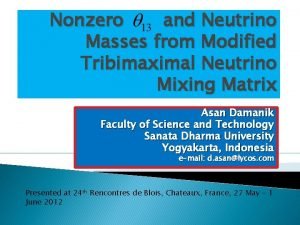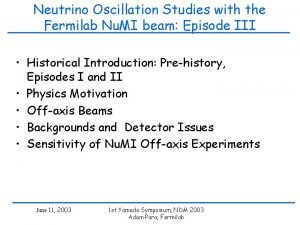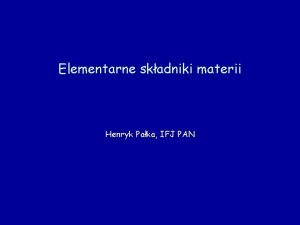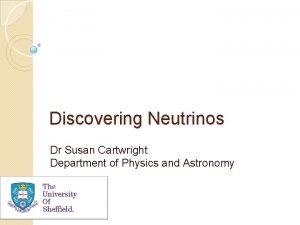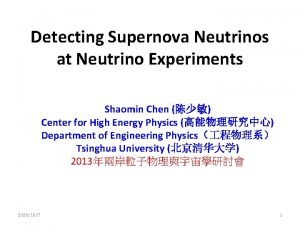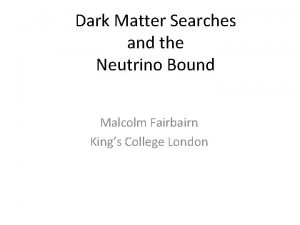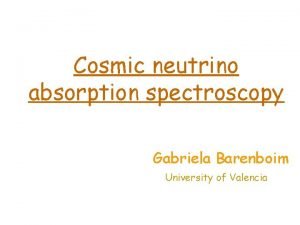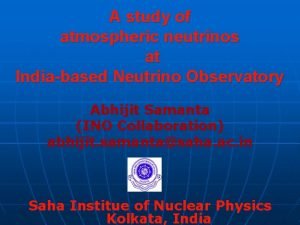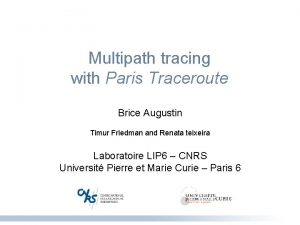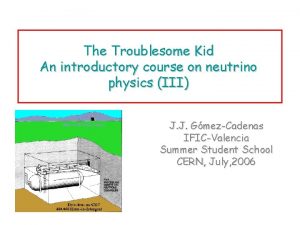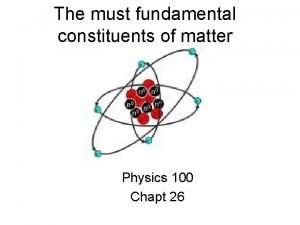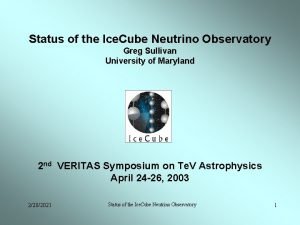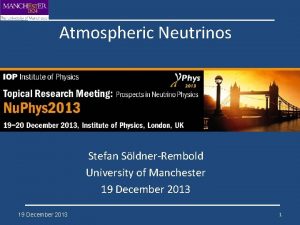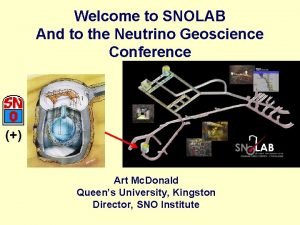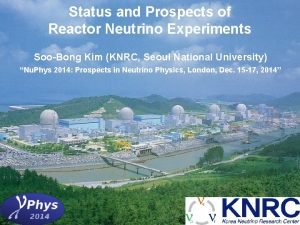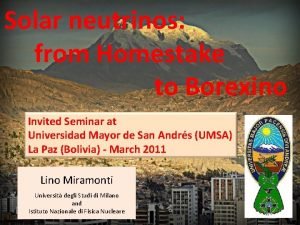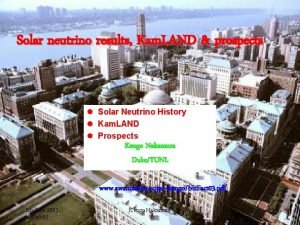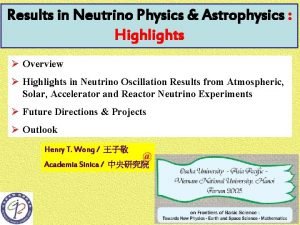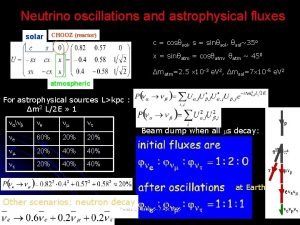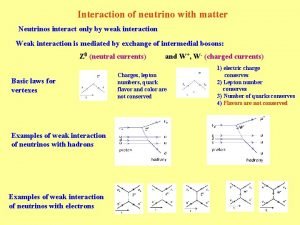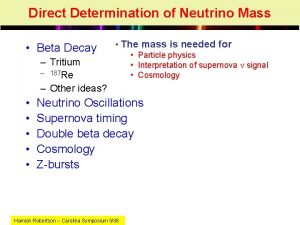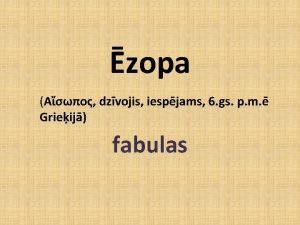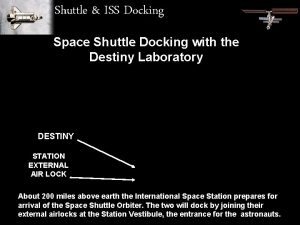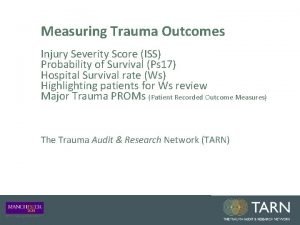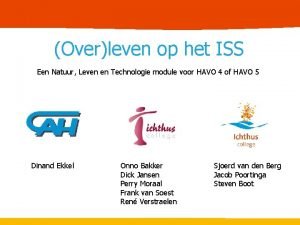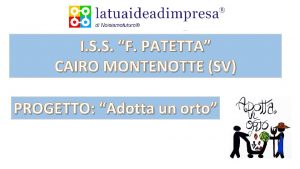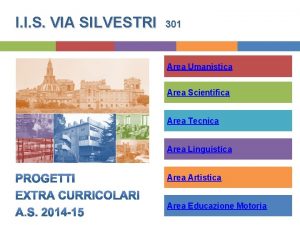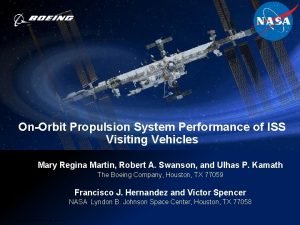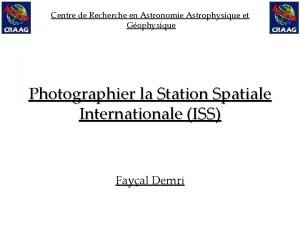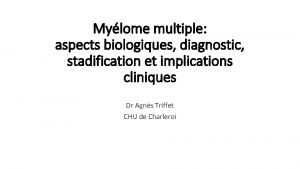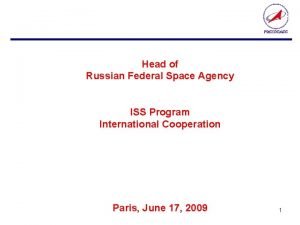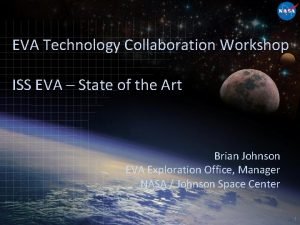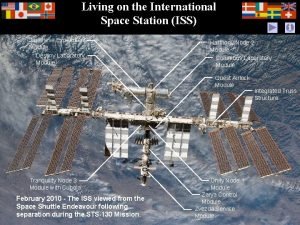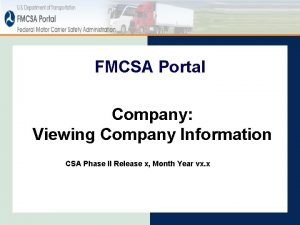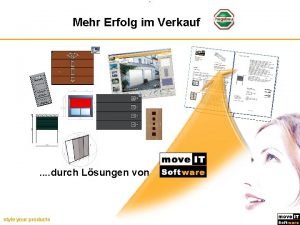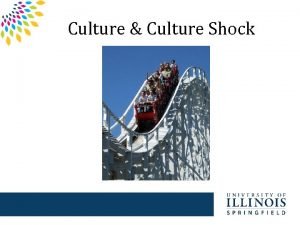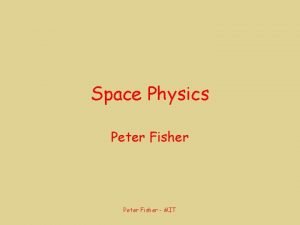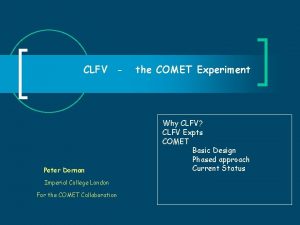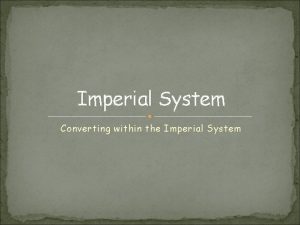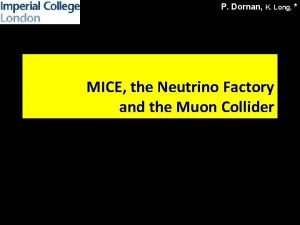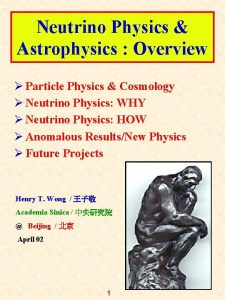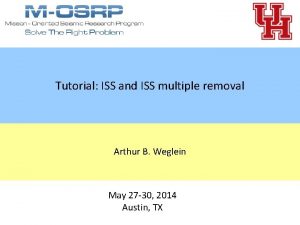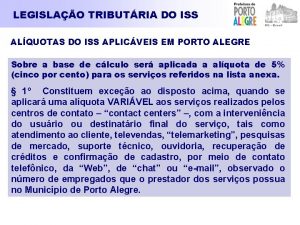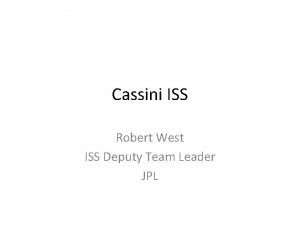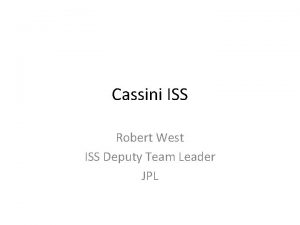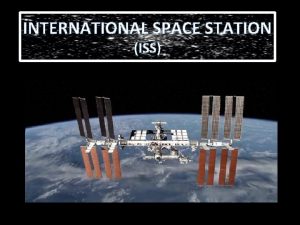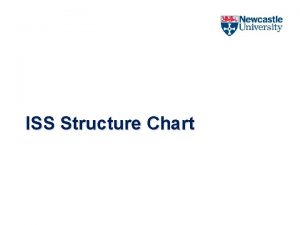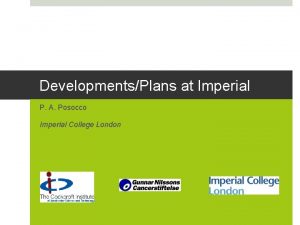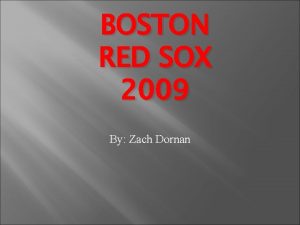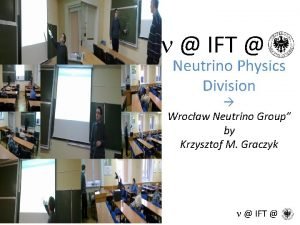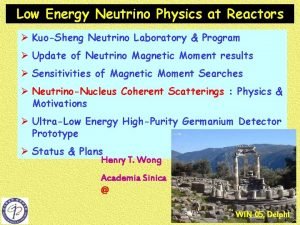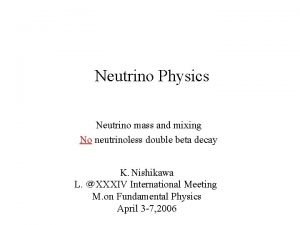Neutrino Physics The ISS Peter Dornan Imperial College





























































- Slides: 61

Neutrino Physics & The ISS Peter Dornan Imperial College London 16 March 2006 P Dornan - MUTAC 2006

Why do Neutrino Physics? n n Least understood particle Beyond the Standard Model ¡ ¡ n A trivial Addition? The Window on the Fundamental Theory? Ultimate theory must relate quarks & leptons ¡ ¡ Cannot do this without a full understanding of the neutrino sector Cannot do this with LHC or ILC 16 March 2006 P Dornan - MUTAC 2006 2

Neutrinos are BSM n In the SM ¡ ¡ ¡ n Neutrinos are massless Lepton Flavour is Conserved Neutrino & antineutrino distinguished on the basis of helicity Neurtrino Oscillation shows ¡ ¡ ¡ Neutrinos have mass Lepton Flavour is not Conserved Helicity cannot distinguish neutrinos from antineutrinos 16 March 2006 P Dornan - MUTAC 2006 3

A Minor Extension of the SM? n n Neutrinos are Dirac Particles Right handed Neutrinos exist ¡ With no known interactions n n Or very weak ones Lepton Flavour is not respected n n But overall lepton number is conserved So Distinguish Neutrino and Anti. Neutirno on the basis of Lepton Number ¡ n - whatever it is Masses, Mixing Parameters - and CP Violation ¡ - just yet more parameters to feed into theory 16 March 2006 P Dornan - MUTAC 2006 4

A Window on a Higher Theory? n n Neutrinos are Majorana States ¡ ¡ n n now we can speculate Neutrino and anti neutrino are not distinct Right handed neutrinos exist at very high masses ~ unification scale Mixing angles - and probably masses – are related to those in the quark sector More forms of CP violation in the lepton area than the MNS phase ¡ And this will solve the matter-antimatter mystery 16 March 2006 P Dornan - MUTAC 2006 5

Oscillation Parametrisation n For oscillation must have two sets of eigenstates – flavour e-states and mass e-states Oscillation defined by 3 mixing angles, q 12, q 13, q 23 1 phase, d `atmospheric’ 16 March 2006 `cross/reactor’ P Dornan - MUTAC 2006 `solar’ 6

Oscillation Probability n For just two state system Depends upon Mixing Angle, Mass Squared Difference, L/E More Complex for a three state system and additional complications if neutrinos pass through matter 16 March 2006 P Dornan - MUTAC 2006 7

Where are we? from: Maltoni, Schwetz, Tortola, Valle (’ 04) Unknown Mass hierarchy, m 2 > m 3 or m 2 < m 3? No information on CP violating phase d 16 March 2006 P Dornan - MUTAC 2006 8

Unanswered – Oscillation Expts n Is q 23 maximal? , n CP Violation in the lepton sector? n Mass hierarchy? ¡ How small is q 13? m 3 < or >m 2 n CPT violation? n The ultimate accuracy on the mixing angles and the mass differences ¡ n What accuracy is needed? (LSND? Sterile neutrino(s)? ) 16 March 2006 P Dornan - MUTAC 2006 9

The Precision Era - after T 2 K and Nova n n Around 2012 - 2016 We shall have good measurements of ¡ n n q 12, q 23, Dm 212, Dm 223 Probably have a measurement of q 13 Possibly know the mass hierarchy So can now plan for the ultimate neutrino measurements ¡ Refine all parameters ¡ Check consistency ¡ Measure CP Violation This is the motivation for the ISS 16 March 2006 P Dornan - MUTAC 2006 10

The International Scoping Study (ISS) International scoping study of a future Neutrino Factory and superbeam facility n A One Year Study ¡ Commenced Nu. Fact 05 – ended Nu. Fact 06 ¡ Final Report now in preparation n Motivation n Organisation n Outcome ¡ ¡ ¡ n Physics Group Accelerator Group Detector Group The next step - IDS? 16 March 2006 P Dornan - MUTAC 2006 11

ISS: motivation n Goal: Preparation for a design study leading to a conceptual design of a future neutrino facility ¡ This will be a Significant international effort taking several years ¡ Review physics case Critical comparison of options ¡ Review options for accelerator complex: n ¡ Emphasis on the neutrino factory Review options for neutrino-detection systems 16 March 2006 P Dornan - MUTAC 2006 12

ISS: organisation 16 March 2006 P Dornan - MUTAC 2006 13

Neutrino source – options: n Second generation super-beam ¡ CERN, FNAL, BNL, JPARC II n Bata-beam n Neutrino Factory 16 March 2006 P Dornan - MUTAC 2006 14

Topics Covered in the ISS n Accelerator ¡ Mainly the Neutrino Factory Solution n n Detector ¡ All neutrino detectors n n Some consideration of superbeam where synergy exists Appropriate for Superbeams, Beta beams and Neutrino factory Physics ¡ The potential of superbeams, beta beams and neutrino factory with appropriate detectors 16 March 2006 P Dornan - MUTAC 2006 15

Meetings – an Intensive Year n Plenary meetings to date: ¡ ¡ n CERN: 22 – 24 September 2005 KEK: 23 – 26 January 2006 RAL: 24 – 27 April 2006 UC Irvine: 21 – 23 August 2006 8 Workshops: ¡ Accelerator, Detector, Physics. Joint Physics/Detector ¡ An amazing amount of work by many n This very brief summary cannot do justice to it n Here are just a few of the items I found particulalry interesting. n Read the final report ¡ Early next year 16 March 2006 P Dornan - MUTAC 2006 16

Accelerator Group ¡ A Baseline for the subsequent Design Study n n n ¡ Study alternative configurations; to arrive at baseline specifications Develop tools required for end-to-end simulations Identify Future R&D Subsystems & subgroups n n n Proton driver Target and capture Front end ¡ ¡ n n Bunching and phase rotation Cooling Acceleration Decay ring 16 March 2006 P Dornan - MUTAC 2006 17

Proton Driver - Optimum Energy n Optimum Energy for high-Z targets broad, but drops at low energy –: 6 – 11 Ge. V +: 9 – 19 Ge. V We adopted 10 ± 5 Ge. V as representative range 16 March 2006 P Dornan - MUTAC 2006 18

Bunch Length Dependence n 1 ns is preferred, but 2 -3 ns is acceptable ¡ 16 March 2006 such short bunches harder to achieve at low beam energy P Dornan - MUTAC 2006 19

Proton Driver - Baseline ¡ Specify parameters, not design n implicitly assumes liquid-metal target Parameter Value Energy (Ge. V) 10 ± 5 Beam power (MW) 4 Repetition rate (Hz) 50 No. of bunch trains 3, 5 a) Bunch length, rms (ns) 2± 1 Beam durationb) ( s) 40 16 March 2006 a)Values ranging from 1– 5 possibly acceptable. b)Maximum spill duration for liquid-metal target. P Dornan - MUTAC 2006 20

Target and capture n MERIT experiment at CERN ¡ High-power liquid-mercury jet target engineering demonstration 16 March 2006 P Dornan - MUTAC 2006 21

Influences on the Targetry choice micropulse macro-pulse the proton driver To reduce space charge it is best to have many and long micro-pulses, long macro-pulses and a high repetition rate. the front end Need a micro-pulse of ~<3 ns for phase rotation. The beryllium windows will not stand a pulse longer than 160 μs. the storage ring Should not exceed ~4 micro-pulses to limit the size of the storage ring. Solid Targets Prefer dc rather than pulsed beams to avoid thermal shock. Jet Targets Because the jet breaks up after the beam hits, the macro-pulse length should not be too long, ~<50 s. Pulse repetition rates greater than 50 Hz. P Dornan will make re-establishment of the jet difficult 16 March 2006 - MUTAC 2006 22

Cooling v Acceptance n Trade-off ¡ increasing from 30 to 35 mm-rad halves the required length of cooling channel n at 45 mm-rad, no cooling needed n Unlikely that A > 30 mm-rad is practical n Cooling Necessary 16 March 2006 P Dornan - MUTAC 2006 23

Cooling: hardware R&D programme n Complementary programmes: Mu. Cool: ¡ n ¡ MICE: n n Design, prototype, and test – using an intense proton beam – cooling channel components Design, construct, commission, and operate – in a muon beam – a section of cooling channel and measure its performance in a variety of modes Both programmes well advanced 16 March 2006 P Dornan - MUTAC 2006 24

Baseline(2) n Target ¡ assume liquid target; Hg, look at Pb-Bi also n Front ¡ End bunching and phase rotation nuse ¡ U. S. Study 2 a configuration cooling ninclude ¡ linear cooling channel in baseline - as being tested with MICE keep both signs of muons n“waste not, want not” 16 March 2006 P Dornan - MUTAC 2006 25

Acceleration - FFAG development n n Increasing effort on scaling and non-scaling FFAG PRISM: Phase rotated intense muon source ¡ ¡ EMMA 16 March 2006 Under construction in Osaka Commissioning 2007 Proof of principle ‘non -scaling’ FFAGDecay ring : Electron model of muon acceleration P Dornan - MUTAC 2006 26

Muon Decay Rings Triangle rings would be stacked side by side in tunnel one ring stores + and one ring stores – permits illuminating two detectors with (interleaved) neutrinos and antineutrinos simultaneously 16 March 2006 Racetrack rings have two long straight sections that can be aimed at a single detector site could alternate storing + and – in one ring, or store both together second ring, More flexibility than triangle case, but probably more expensive P Dornan - MUTAC 2006 27

16 March 2006 P Dornan - MUTAC 2006 28

Baseline (3) n Acceleration ¡ used mixed system n linac, dog-bone RLA(s), FFAGs ¡ n transition energies between subsystems still being debated Decay Ring ¡ adopt racetrack n keep alive triangle as alternative ¡ n depends on choice of source and baselines energy 20 to 40 Ge. V ¡ 16 March 2006 50 Ge. V okay for ring, but implies more acceleration than presently planned P Dornan - MUTAC 2006 29

Current Baseline Old Baseline 16 March 2006 P Dornan - MUTAC 2006 30

Detector Group n Detectors studied ¡ Water Cerenkov ¡ Magnetised Segmented Detectors n Iron / Scintillator sandwich (MINOS like) n Totally Active Scintillating Detector (Minerva like) ¡ Liquid Argon TPC ¡ Hybrid Emulsion Detectors ¡ Beam Diagnostic Devices ¡ Near Detector 16 March 2006 P Dornan - MUTAC 2006 31

Water Cerenkov o o Suitable for low energy neutrino detection (~ 0. 2 -1 Ge. V) Excellent n -ne separation Muon-like Electron-like Impossible to put a magnetic field around it, so not suitable for neutrino factory. Baseline for low energy beta-beams or super-beams 16 March 2006 P Dornan - MUTAC 2006 32

Liquid argon n Detector concepts n Various configurations being studied in ISS: ¡ ¡ ¡ Glacier T 2 K-LAr (near det. ) Nu. MI LAr. TPC 16 March 2006 P Dornan - MUTAC 2006 33

Magnetised Segmented Detectors o o o Golden channel signature: “wrong-sign” muons in magnetised 9 x. MINOS (5. 4 k. T) calorimeter Baseline technology for a far detector at a neutrino factory Issues: electron ID, segmentation, readout technology (RPC or scintillator? ) – need R&D to resolve these Technology is well understood, R&D needed to determine details, natural progression from MINOS Magnetisation of volume seems to be most challenging problem A ~100 kton detector with a B-field of 1. 4 T is feasible (Nelson) 16 March 2006 P Dornan - MUTAC 2006 34

Totally Active Segmented Detector Simulation of a Totally Active Scintillating Detector (TASD) using Nona and Minerna concepts with Geant 4 Ellis, Bross ¡ ¡ 3333 Modules (X and Y plane) Each plane contains 1000 slabs Total: 6. 7 M channels 15 m 1. 5 cm 100 15 m ¡ 15 m m 3 cm n n n Momenta between 100 Me. V/c to 15 Ge. V/c Magnetic field considered: 0. 5 T Reconstructed position resolution ~ 4. 5 mm 16 March 2006 P Dornan - MUTAC 2006 35

TASD – Low Mom Performance Muon reconstructed efficiency 16 March 2006 Muon charge mis-ID rate P Dornan - MUTAC 2006 36

Large Magnetic Volumes Possible magnet schemes for MSD Camilleri, Bross, Strolin 10 solenoids next to each other. Horizontal field perpendicular to beam Each: 750 turns, 4500 amps, 0. 2 Tesla. 42 MJoules. Total: 420 MJoules (CMS: 2700 MJoules) Magnet n Steel 15 m x 15 m solenoid modules; B = 0. 5 T Warm coil magnets: • Total cost: $5 m x 10 = $50 M • Problem: operational cost (>$13 M/year with factor of 3 uncertainty) Superconducting coil magnet cost extrapolation formulas: x 10 • Use stored energy – 14 M$/modules! • Use magnetic volume – 60 M$/module • GEM magnet extrapolation – 69 M$/module 16 March 2006 P Dornan - MUTAC 2006 37

High Tc Magnet Possibilities ¡ Recently announced cable has 3 X the current carrying capability at somewhat smaller cost. n n So the 200 X cost (over conventional SC) is now maybe 60. So look closer (with thanks to Bob Palmer) ¡ Assume n Operation at 35 K ¡ ¡ ¡ Superconductor cost for 30, 000 m 3 (USD) (newly announced cable) n ¡ n $50 M Engineering (WAG) n n $50 M Foam Insulated vessel (based on GLACIER studies) n ¡ Still allows for foam insulated cryostat (no vacuum loading) Higher current carrying capacity $50 M $150 M Exciting Future Possibility - Needs to be Followed 16 March 2006 P Dornan - MUTAC 2006 38

Magnetised Emulsion Detectors target spectrometer shower absorber Electronic det: e/ / separator & “Time stamp” stainless steel plate emulsion film Muon momentum resolution 16 March 2006 Rohacell® plate Muon charge misidentification P Dornan - MUTAC 2006 39

A Neutrino Detector Facility at CERN? o Request test beam in East Area at the CERN PS, with a fixed dipole magnet for dedicated Neutrino Detector R&D Liquid Argon tests, beam telescopes for silicon pixel and Sci. Fi tests, calorimetry … Neutrino detector test facility: community resource for neutrino detector R&D 16 March 2006 P Dornan - MUTAC 2006 40

Matter Effects - Reducing the Systematic Uncertainty Geophysicist Recommendations Can probably reduce systematic to <2% Such a study, in collaboration with geophysicists will be needed for candidate LBL sites 16 March 2006 P Dornan - MUTAC 2006 41

Detector Baseline beam Far detector R&D needed sub-Ge. V BB and SB (MEMPHYS, T 2 K) Megaton WC photosensors! cavern and infrastructure few Ge. V BB and SB (off axis NUMI, high BB, WBB) no established baseline TASD (NOv. A-like) or Liquid Argon TPC or Megaton WC photosensors and detectors long drifts, long wires, LEMs Neutrino Factory (20 -50 Ge. V, 2500 -7000 km) ~100 kton magnetized iron calorimeter (golden) + ~10 kton non-magnetic ECC (silver) straight forward from MINOS simulation+physics studies ibid vs OPERA 16 March 2006 P Dornan - MUTAC 2006 42

Beyond the Baseline beam Far detector R&D needed sub-Ge. V BB and SB (MEMPHYS, T 2 K) Liquid Argon TPC (100 kton) clarify what is the advantage wrt WC? few Ge. V BB and SB (off axis NUMI, high BB) no established baseline Neutrino Factory (20 -50 Ge. V, 2500 -7000 km) platinum detectors! large coil around TASD Larg ECC P Dornan - MUTAC 2006 16 March 2006 engineering study for magnet! simulations and physics evaluation; photosensors, long drift, etc… 43

Physics Group n Theory subgroup ¡ n Phenomenological subgroup ¡ n Justification for high-precision, high-sensitivity neutrino-oscillation programme Review models purporting to describe neutrino oscillations and identify measurables that distinguish between them Experimental subgroup ¡ Use realistic assumptions on the performance of accelerator and detector to: n n Evaluate performance of the super-beam, betabeam and Neutrino Factory alone or in combination Muon physics subgroup ¡ Lepton-flavour violating processes – clear synergy with neutrino oscillations 16 March 2006 P Dornan - MUTAC 2006 44

Relating Quarks to Leptons 16 March 2006 P Dornan - MUTAC 2006 45

A Possible Neutrino Sum Rule 16 March 2006 P Dornan - MUTAC 2006 46

Exerimental Sub. Group ¡ Optimise performance of Neutrino Factory as a function of Muon ring energy and the baseline (L/E nbut doesn’t scale) ¡ Aim to use realistic assumptions on the performance of accelerator and detector ¡ Evaluate relative performance of the super-beam, beta-beam and Neutrino Factory alone or in combination n 16 March 2006 P Dornan - MUTAC 2006 47

Neutrino Factory Performance “platinum” n Reference Neutrino Factory: ¡ ¡ ¡ “Golden” 1021 useful decays/yr; exposure ‘ 5 plus 5’ years 50 k. Tonne magnetised iron detector (MID) Optimisation of with MINOS performance Backgrounds (for golden channel): Muon energy & n n ¡ ¡ Right-sign muons Charm decays Baseline Eres ~ 0. 15 * Eν variable Eν bins, efficiency and migration matrices 16 March 2006 P Dornan - MUTAC 2006 P. Huber, M. Lindner M. Rolinec W. Winter, A. Donini, et al. 48

Nu. Fact - sin 22θ 13 sensitivity Magic baseline (7500 km) good degeneracy solver Stored muon energy > 20 Ge. V 16 March 2006 P Dornan - MUTAC 2006 49

Nu. Fact - CP sensitivity Baseline: 3000 – 5000 km Stored-muon energy > 30 Ge. V 16 March 2006 P Dornan - MUTAC 2006 50

Nu. Fact - Mass Hierarchy sensitivity Baseline: ~7500 km Stored muon energy 20 – 50 Ge. V 16 March 2006 P Dornan - MUTAC 2006 51

Nu. Fact - Multiple baselines: n Performance for two 25 k. T detectors relative to the performance for one 50 k. T detector at the magic baseline Stored muon energy 50 Ge. V Second detector at ~3000 km preferred as it has sensitivity to CP violation 16 March 2006 P Dornan - MUTAC 2006 52

Comparisons - Superbeams ¡ ‘SPL‘ CERN Frejus: n n n ¡ ‘T 2 HK’ J-PARC Hyper. Kamiokande: n n n ¡ 10 year exposure, on-axis beam E(p) = 2. 2/3. 5 Ge. V, E(n) ~0. 3 Ge. V Baseline ~130 km 10 year exposure off-axis beam E(p) = 50 Ge. V, E(n) ~0. 6 Ge. V Baseline ~295 km ‘WBB’ BNL → Henderson/Homestake ¡ ¡ E(p) = 24 Ge. V, E(n) 0 - 6 Ge. V Baseline: 2500 km FNAL → Henderson/Homestake ¡ ¡ E(p) = 120 Ge. V, E(n) 0 - 10 Ge. V Baseline: 1250 km 16 March 2006 P Dornan - MUTAC 2006 ¡ 53

Comparisons - Beta beams ¡ Low : n ¡ High flux (~1018 decays per year) and high flux (1019 dpy) High : n n = 100 and L = 130 km = 350 and L = 700 km High flux (~1018 decays per year) and high flux (1019 dpy) Also Beta beam abd superbeam combination 16 March 2006 P Dornan - MUTAC 2006 54

Comparisons - Neutrino Factory n ¡ Basic. One 50 k. Tonne magnetised iron detector with MINOS performance n n ¡ 1021 useful decays/yr; exposure ‘ 5 plus 5’ years Eres ~ 0. 15 * Eν = 50 Ge. V Baseline = 4000 km, E = 50 Ge. V Enhanced. Two 50 k. Tonne magnetised iron detectors - Lower energy threshold: n n n Efficiency reaches plateau at 50% by 1 Ge. V Better energy resolution: Eres ~ [0. 15 × Eν 0. 5 + 0. 085] Ge. V Baselines 4000 and 7500 km, E = 20 Ge. V 16 March 2006 P Dornan - MUTAC 2006 55

For q 13 16 March 2006 P Dornan - MUTAC 2006 56

For the Mass Hierarchy 16 March 2006 P Dornan - MUTAC 2006 57

For CP violation 16 March 2006 P Dornan - MUTAC 2006 58

Summary n Compelling case for precision neutrino programme n Extensive performance evaluation of super-beam, betabeam, and Neutrino Factory options is needed ¡ Large θ 13: n Comparable sensitivity ¡ ¡ Intermediate θ 13: n Neutrino Factory better, beta beam competitive ¡ ¡ need to include cost and schedule considerations in evaluating optimum Low θ 13: n With present assumptions Neutrino Factory out-performs other options ¡ 16 March 2006 need to include cost and schedule considerations in evaluating optimum P Dornan - MUTAC 2006 59

Future Clear motivation to move from ISS phase to full ‘Design Study’ phase With Programmes to Optimise the performance of Superbeams Betabeams Neutrino Factory So that the best decision for construction is taken in ~2012 As required by the ‘European Strategy for Particle Physics’ 16 March 2006 P Dornan - MUTAC 2006 60

16 March 2006 P Dornan - MUTAC 2006 61
 Duncan dornan
Duncan dornan Metric system units
Metric system units Silwood business centre
Silwood business centre Imperial college
Imperial college Imperial college blackboard
Imperial college blackboard Imperial college london
Imperial college london Dotterkärna
Dotterkärna The leptons
The leptons Lepton number table
Lepton number table Neutrino
Neutrino Neutrino
Neutrino Lekka cząstka elementarna mion elektron lub neutrino
Lekka cząstka elementarna mion elektron lub neutrino Dr susan cartwright
Dr susan cartwright Neutrino
Neutrino Neutrino
Neutrino Gabriela barenboim
Gabriela barenboim Neutrino
Neutrino Neutrino load balancer
Neutrino load balancer Neutrino
Neutrino Neutrino symbol
Neutrino symbol Ice cube status
Ice cube status Neutrino
Neutrino Solar neutrino
Solar neutrino Neutrino
Neutrino Solar neutrino
Solar neutrino Solar neutrino
Solar neutrino Neutrino mass
Neutrino mass Neutrino
Neutrino Neutrino interaction with matter
Neutrino interaction with matter Neutrino mass
Neutrino mass Fabulā ietvertā galvenā atziņa
Fabulā ietvertā galvenā atziņa Space shuttle iss docking
Space shuttle iss docking Iss security scanner
Iss security scanner Injury severity score
Injury severity score Iss score
Iss score Iss tamu terra dotta
Iss tamu terra dotta Terra dota tamu
Terra dota tamu Aufbau iss
Aufbau iss Sigisweb
Sigisweb Iss kosten
Iss kosten Thang điểm iss
Thang điểm iss Iss ham radio antenna
Iss ham radio antenna Iata new gen iss
Iata new gen iss Opwdd iss housing subsidy
Opwdd iss housing subsidy Zuurstofkaars
Zuurstofkaars Iss cairo
Iss cairo Iis silvestri
Iis silvestri Iss
Iss I 20 form sample
I 20 form sample Prevision passage iss
Prevision passage iss Uw iss
Uw iss Sungkyunkwan university summer school
Sungkyunkwan university summer school Salmon et durie
Salmon et durie Terry holliday
Terry holliday Esa multimedia.esa.int./multimedia/virtual-tour-iss
Esa multimedia.esa.int./multimedia/virtual-tour-iss Space agency
Space agency Eva technology
Eva technology Iss
Iss Fmcsa csa portal
Fmcsa csa portal Hornbach kilsgaard
Hornbach kilsgaard Iss uis
Iss uis Peter fisher mit
Peter fisher mit
